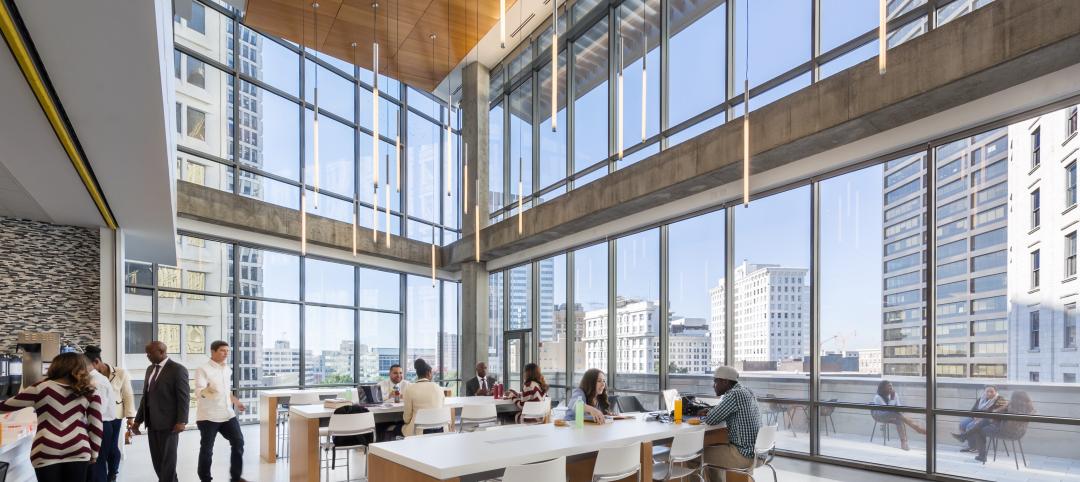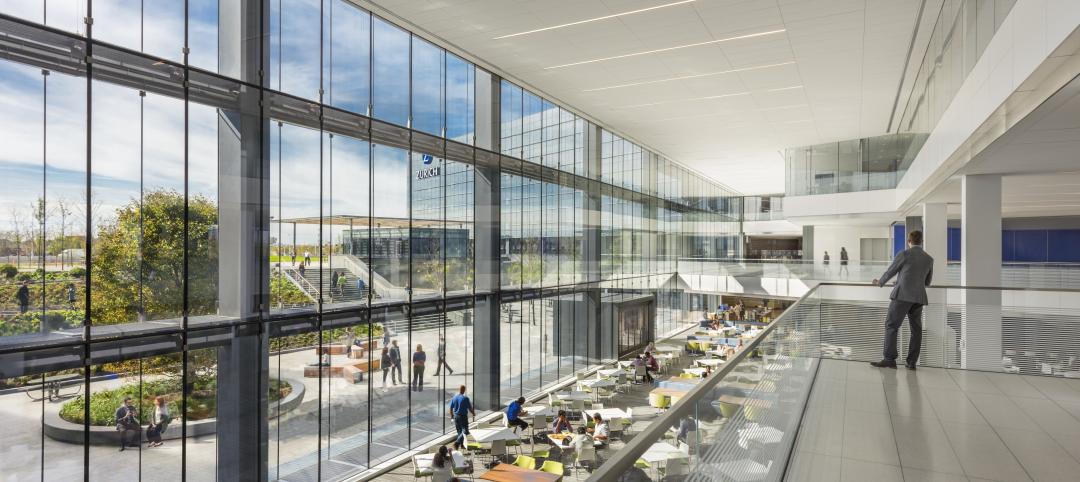Building enclosures have evolved drastically in the modern age. Previously designing a building enclosure meant solid load-bearing walls of masonry between interior spaces and the unrelenting outdoors. Now, specification involves interactive layers and components of varying materials that enclose but are separate from the building’s structure. Each layer serves a function, as barriers against moisture, fire, thermal conductivity, air leakage, and more. And the advent of increasingly stringent building codes and energy efficiency standards presents a need for AEC teams to craft their projects ever more carefully in order to meet heightened performance expectations and deliver buildings on time and on budget.
“As a result, specifying and detailing state-of-the-art building enclosure systems often involves a time-consuming, multi-disciplinary approach,” says chief architect Herbert Slone, senior manager of commercial building systems for Owens Corning. “The building envelope functions as a critical layer of protection designed to be energy efficient, fire resistant, and to prevent moisture from accumulating and damaging the building.”
Architects have multiple factors to consider when specifying their building enclosures, and approaches to performance and code compliance vary. According to national energy performance standards like ASHRAE Standard 90.1, projects can utilize prescriptive packages that list minimum requirements for each building component; “trade off” decreased energy efficiency for a given component for other enhanced ones; or compare designs against established performance baselines. The best approach for each project ultimately depends “on the complexity or uniqueness of the building, and the amount of time and money available for demonstrating compliance.”[1]
Standards and testing that AEC teams must comply with include ASTM E2357 (Air Leakage), ASTM E331 (Water Penetration), ASTM E119 (Fire Resistance), and NFPA 285 (Fire Propagation). Specifying building enclosures that ensure all these requirements are met can be difficult with the vast array of component products available, says Slone, and there is growing interest in comprehensive solutions that streamline the design process for architects.
Protecting building occupants against the exterior environment will vary widely in form. Projects in the desert of the southwestern United States will have different sub-assembly performance needs than those along the Atlantic Ocean. Interior environments will also have an effect on the success of the building enclosure, as there may be microclimates present such as hotel swimming pools, or data center rooms, etc.[2]
Choosing building enclosure systems is a critical task for everyone on the Building Team. Says Slone: “If the products are chosen or composed incorrectly, it can compromise the integrity of the building and lead to significant complications for the building occupants and owners.”
References
1 https://www.energycodes.gov/sites/default/files/documents/co_edition_commercial.pdf
2 http://buildingscience.com/documents/digests/bsd-018-the-building-enclosure_revised
Related Stories
Sponsored | Performing Arts Centers | Jan 17, 2024
Performance-based facilities for performing arts boost the bottom line
A look at design trends for “budget-wise” performing arts facilities reveals ways in which well-planned and well-built facilities help performers and audiences get the most out of the arts. This continuing education course is worth 1.0 AIA learning unit.
Sponsored | Multifamily Housing | May 8, 2022
Choosing the right paver system for rooftop amenity spaces
This AIA course by Hoffmann Architects offers best practices for choosing the right paver system for rooftop amenity spaces in multifamily buildings.
Sponsored | BD+C University Course | Apr 19, 2022
Multi-story building systems and selection criteria
This course outlines the attributes, functions, benefits, limits, and acoustic qualities of composite deck slabs. It reviews the three primary types of composite systems that represent the full range of long-span composite floor systems and examines the criteria for their selection, design, and engineering.
Sponsored | BD+C University Course | Jan 12, 2022
Total steel project performance
This instructor-led video course discusses actual project scenarios where collaborative steel joist and deck design have reduced total-project costs. In an era when incomplete structural drawings are a growing concern for our industry, the course reveals hidden costs and risks that can be avoided.

















